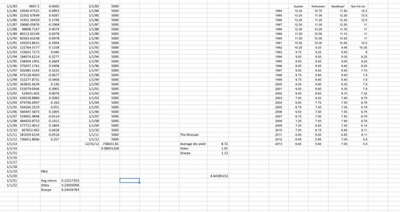- 11,295
First, I know my job. Credit card debt is the first that must be addressed and contained before doing long-term savings.
Your disapproval of permanent life insurance has no bearing on how I do my job. One day, you should do a comparison between IRC Section 7702 and 408.
Ignorance on your part does not constitute an obligation to comply with your perceptions on my part.
Your disapproval of permanent life insurance has no bearing on how I do my job. One day, you should do a comparison between IRC Section 7702 and 408.
Ignorance on your part does not constitute an obligation to comply with your perceptions on my part.









 <---hey I actually meant to use that one!
<---hey I actually meant to use that one!
